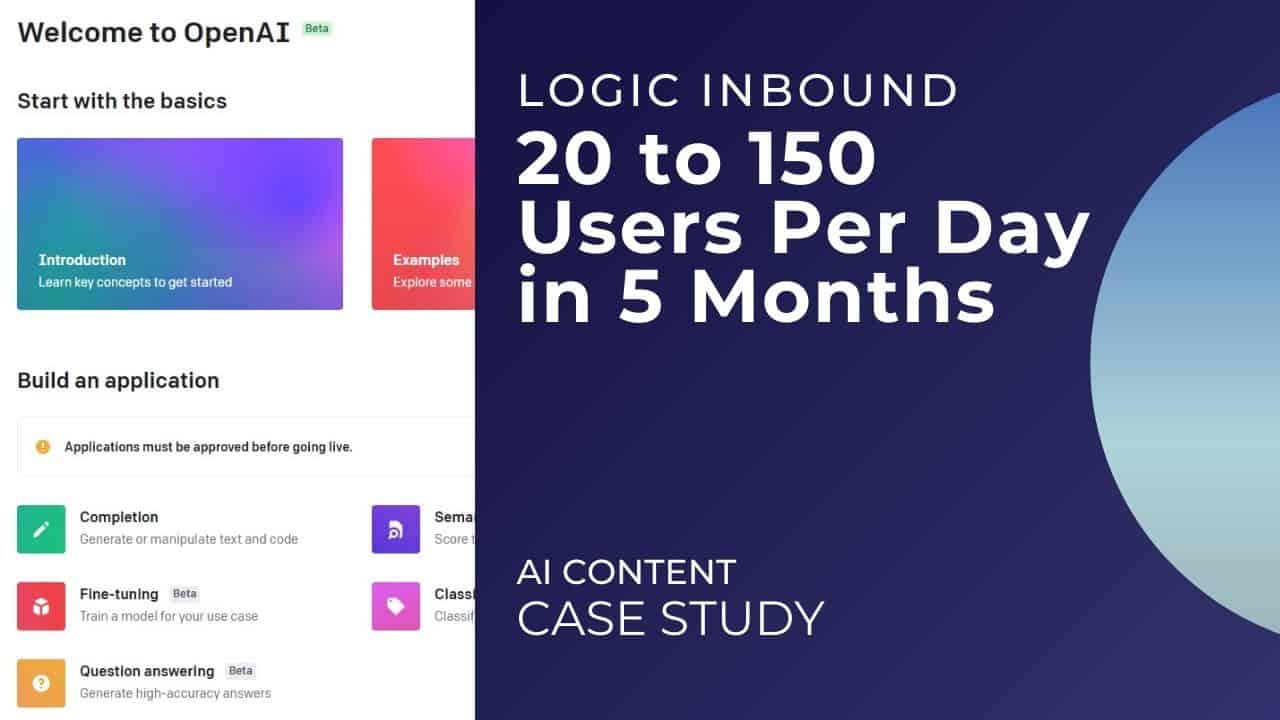Note – To keep our project confidential, the website involved in this case study will be referred to as TF.com.
We’re all familiar with automatic content generation tools of the past. Known as ‘content spinners’, they generally yielded poor quality content that was borderline unreadable and unlikely to create any user engagement. In modern day SEO, this kind of content is useless since user engagement metrics matter a lot more in search engine rankings. Your site won’t go anywhere if it has a user bounce rate of 90%.
Logic Inbound was accepted into the beta program of Open AI in May 2021. Initially, our team’s response to AI content was lukewarm due to preconceived notions about tool-generated content. However, one of our team members took an interest in Open AI’s Playground module and started working with it to generate content. The team found this content to be impressive for what it was – automatically generated.
Impressed by Open AI’s content capabilities, a team member decided to incorporate AI content into their personal site project (TF.com). At the time, the site had 48 organic (handwritten) pieces of content. TF.com was created at the start of 2021 and was averaging 20-40 users per day by June 2021 on the back of 48 organic blog posts.
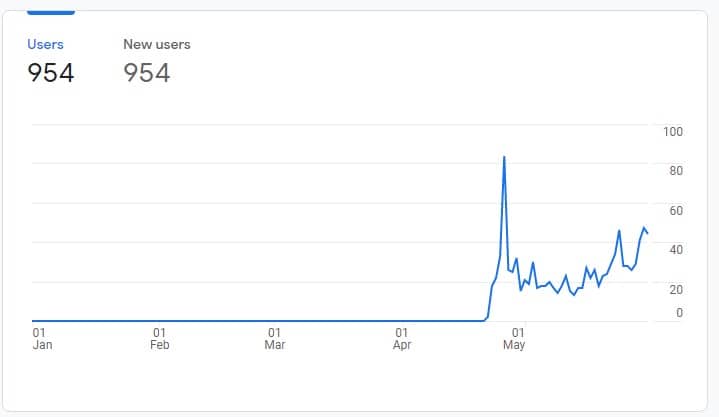
Initially, Open AI’s playground module was used manually to create blog posts on TF.com.
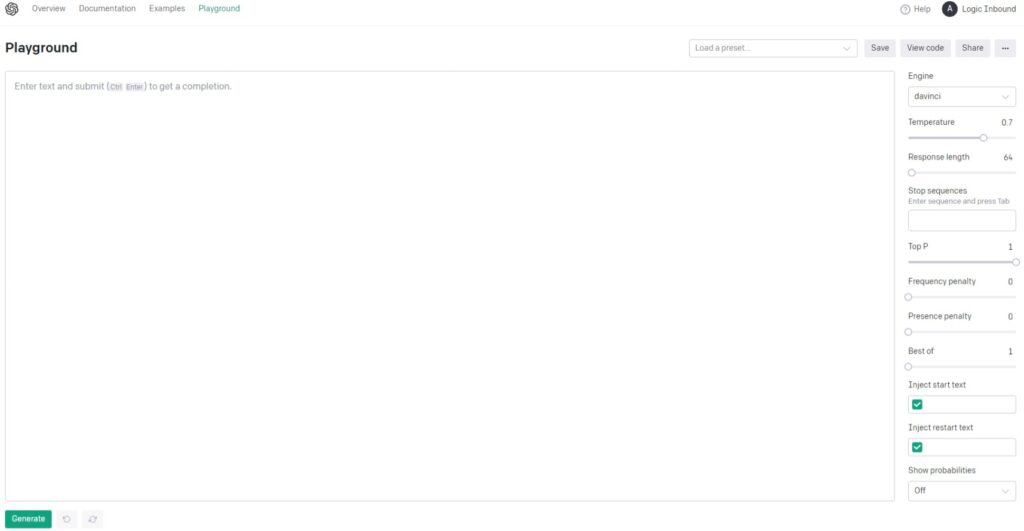
Open AI creates content by taking ‘content prompts’ from the user. For example you might give it an input prompt, ‘The year 1945 was hugely burdensome for humanity because’ , and it will figure out the next sequence of content based on this. Open AI has read 40% of the internet’s entire content (up to 2019), so it has a lot of data to refer to. This isn’t content spinning, this is virtual content generation backed by massive amounts of data and language modeling.

Text in bold is the ‘input prompt’. The rest of the text was generated by Open AI without any other human inputs.
The main cost that we were trying to beat with AI content was time and cost. With some practice, our team member was able to create 1000-to-1500-word blog posts in Open AI in about 5 minutes. Entering these posts into WordPress and formatting them took another 5 minutes, so the total time cost of an article was about 10 minutes. It should be noted that this time will vary quite a lot depending on the content.
In this case, the content was following one content template so it was quite easy. Content pieces that require their own unique outlines will require much more time.
At this point, our team member was ‘writing’ 5 blog posts for their site project every day. However we always felt that even this pace is slow, considering that this is AI content and the quality isn’t quite equivalent to organically produced content.
Around August we discovered the Open AI API, which allows you to control its content generation capabilities programmatically. A couple of team members took interest in this and learnt how to code JavaScript code for content generation through Open AI.
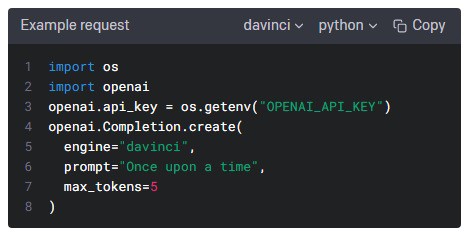
By creating a single blog post template (with fixed headings) and using similar keywords such as ‘best activities in (US state)‘, we were able to generate 50 articles (one for each state) in about 40 minutes. This was the big leap forward we were hoping for with AI content.
Over 5 months, our team member created more than 300+ AI-written articles. One of our concerns was, ‘would these articles get indexed and rank on Google’?
The answer to this is that so far, AI content has been able to get indexed and rank quite well on Google.

Data Source – Google Search Console
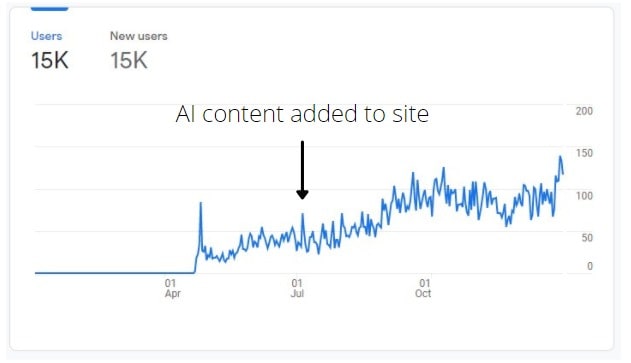
Data Source – Google Analytics
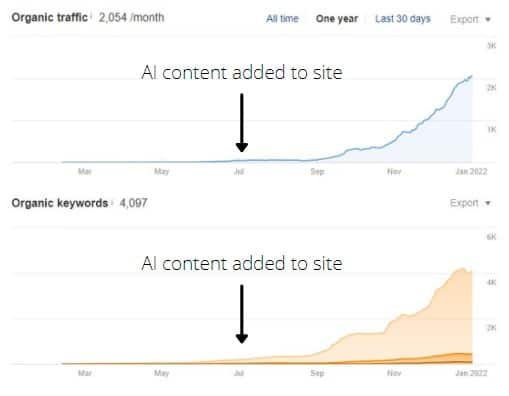
Data Source – Ahrefs.com
The content also creates an about-what-you-expect level of engagement from visitors to the site.

Data Source – Google Analytics
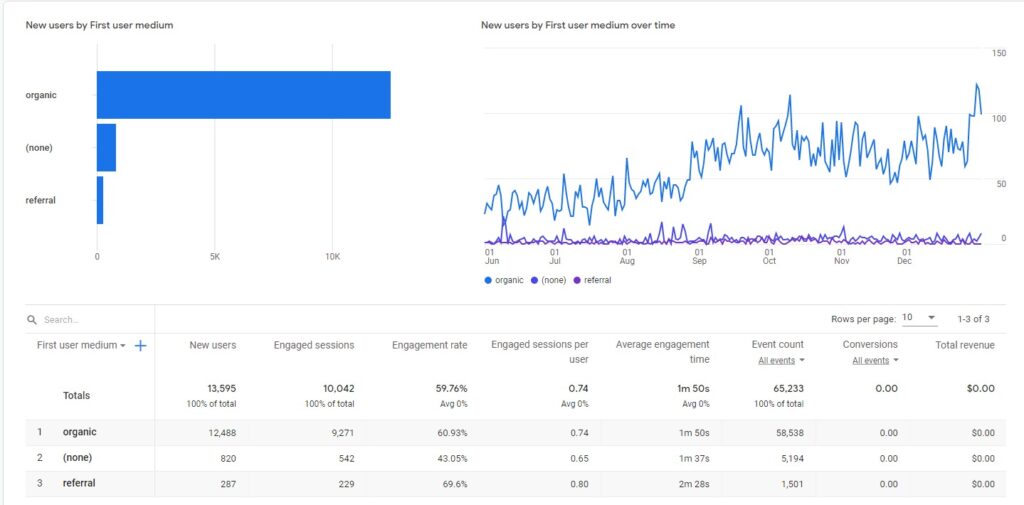
Data Source – Google Analytics
Observations and Drawbacks of AI Content
One of the major conclusions we’ve come to with AI content is that the time cost of doing it manually is quite high. For a high quality AI-generated article you’re looking at an hour’s worth of work at least. Assigning our existing SEOs to this kind of work was therefore found to be unproductive.
The only way AI-generated content makes sense is if it is done en masse, using programming to speed it up exponentially.
Ideal candidates for AI content are directory sites that typically suffer from duplicate content issues. It is simply not viable to create organic content for thousands of pages. AI content is suited for this kind of website as the ‘page template’ is going to be the same page-to-page. Using the same page template, we’re able to fine-tune the output of OpenAI (which can vary widely between runs) by providing high quality, organic input prompts.
AI content is also not suited for content about events and things that have happened after 2019. As mentioned earlier, Open AI has read 40% of the entire internet, but only up to 2019. That makes it useless for creating articles about current events, for example.
